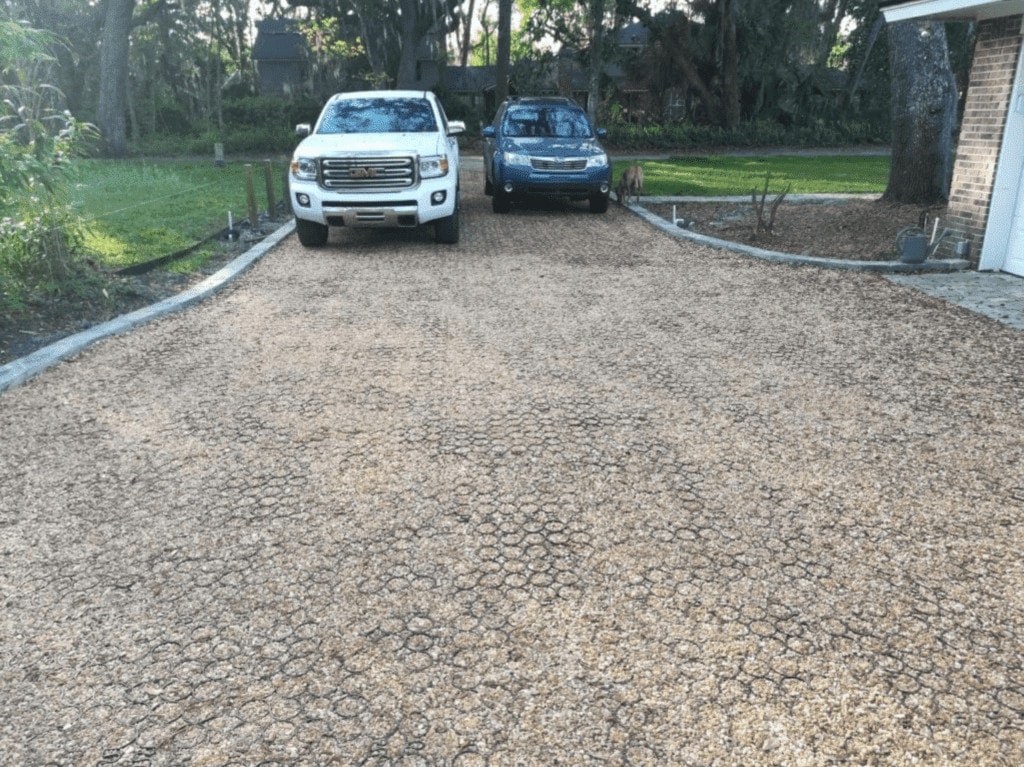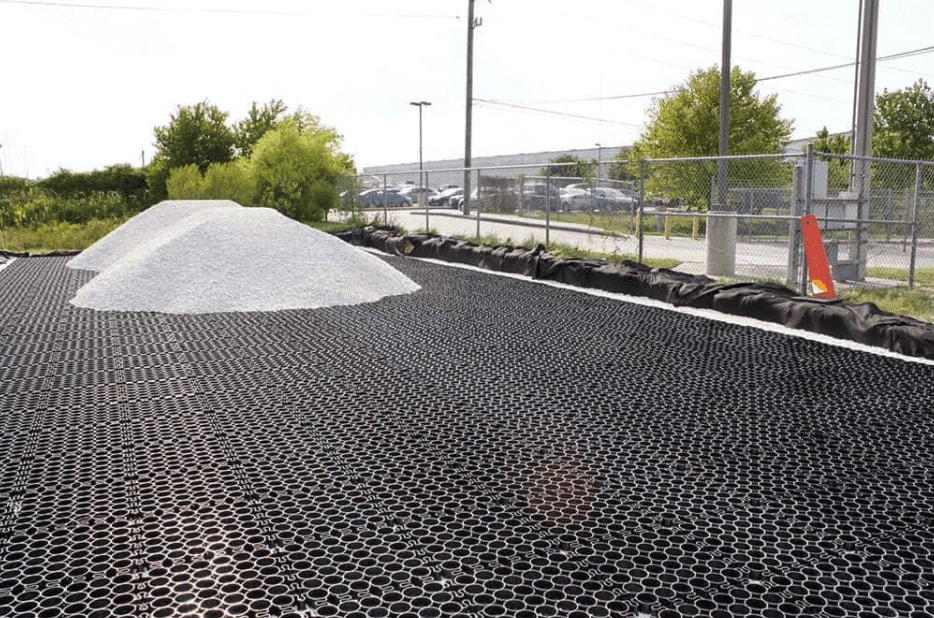
Gravel driveways and walkways are commonly used by many homeowners and business owners alike. The affordability of gravel and relatively low maintenance requirements make it one of the simplest and most efficient materials for paving areas that need to accommodate foot and vehicle traffic.
However, anybody with a gravel driveway or walkway knows that the number one downside to using unstabilized gravel as a paving material is the fact that it spreads and moves around. Gravel is made up of many small pieces of rock and when used as pavement, it tends to migrate and spread out when subjected to constant pressure and friction.
Tips to Keep Gravel in Place on Walkways and Driveways
Thankfully, there are plenty of ways to deal with unstabilized gravel. In case you’re looking to maintain gravel driveways and walkways as best as possible, let’s take a look at how to keep gravel in place on walkways and driveways:
1. Increase the Depth
For those wondering how to keep gravel in place on a driveway, this may be the easiest option. The main reason gravel spreads in driveways and walkways is because it’s not been laid thick enough.
The top layer is always going to spread a little bit without borders or pavers but if you lay at least 3 inches of gravel, the weight will help compact it and sink it deeper into the ground. You can even lay more than 3 inches, just be careful not to go too deep or the gravel will inevitably become loose and start to spread.
2. Tamp and Pack
One easy, DIY way to help prevent the spread of gravel is to tamp and pack it a bit. This simply means using a hoe or other tool to pack your gravel down tightly, and then spraying it down with water.
The water will help the gravel shift around and settle into place better, loosening the soil below and allowing it to better accept the rocks. Just remember not to go overboard with the watering, doing so will make your driveway run and lead to even more spreading.
You want it moist, not muddy.
3. Use Borders

Another way to stop gravel from spreading is to keep it in place with borders. Wooden planks or other durable material can be used to lay borders along the edges of your walkways and driveways. These borders will keep the gravel from spreading out, though they won’t prevent dips or ruts from potentially developing.
Wood is the best material to use for straight pathways and driveways, but if you’ve got to deal with curves you may want something a bit more flexible, like stones.
4. Permeable Plastic Pavers

The most effective, durable, and low-maintenance way to stop gravel from spreading is by using plastic permeable pavers from TRUEGRID. Much like borders, they lock the gravel into place. However, the grid paver cells within each paver retain and keep the gravel from moving at all, even within the borders of the paver. This is the ultimate one and done solution.
The installation of TRUEGRID pavers is simple and can be completed with basic equipment in less than a day. After the top layer of gravel has been compressed into the pavers, your parking areas, driveways and pathways will never shift or spread again.

Once installed, your gravel driveways and pathways will require very little maintenance at all. Stormwater and all liquids will drain directly through the pavers into the soil below. TRUEGRID’s PRO PLUS® permeable plastic pavers are an example of an affordable and eco-friendly way to eliminate the spread of gravel.
By stabilizing your gravel with pavers made from 100% recycled plastic, you won’t have to worry about adding more gravel, wetting down your pathways, or taking any other measures to ensure your pathways and driveways don’t spread out. No more washboarding, ruts, or potholes.
TRUEGRID pavers can easily be saw-cut to accommodate curves, trees, and other obstacles. In terms of gravel stabilization, you can’t do much better than a cost-effective and permanent solution like the TRUEGRID PRO PLUS® paver system.
Stop the Spread of Gravel Once and For All
Use TRUEGRID PRO PLUS® or PRO LITE pavers if you want to stop gravel from spreading for good.
Not only will you benefit from the clean-cut, professional look of these durable and eco-friendly pavers, but you won’t have to waste another minute tending to loose, unstabilized gravel in your driveways and pathways.
Contact the paving experts at TRUEGRID today for a product sample and project estimate.



